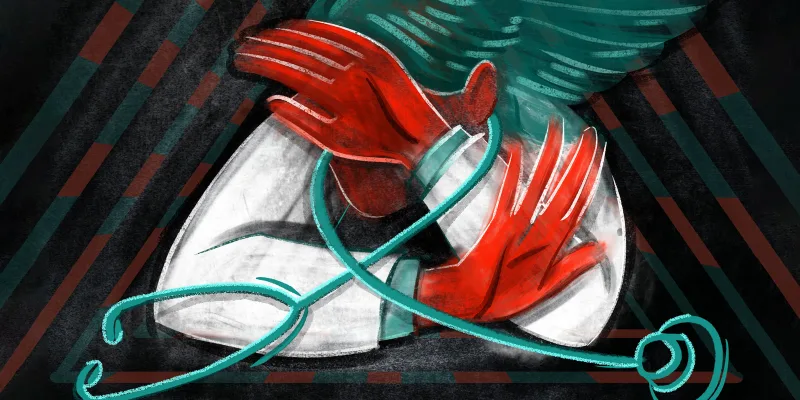As an intern, I would feel awkward whenever I tried to convince a very sick patient or their family to change their code status from “full code” to “do not resuscitate, do not intubate.” Sometimes they appeared offended, possibly thinking that I did not have the patient’s best interests in mind. These conversations often carry misunderstanding and create a chasm in the patient-doctor relationship.
It wasn’t until I became a more experienced senior resident, having taken care of many sick patients and witnessing family discussions, that I felt confident in helping patients and their families transition into a more comfort-focused approach to treatment. Still, I would wonder about my experiences as an intern: What had I said that caused so much confusion during difficult discussions about end-of-life care? How might I have communicated my recommendations better to preserve a good patient-doctor relationship?
Earlier this year, I completed a two-week rotation in inpatient palliative care. I was fortunate enough to work with a very patient and enthusiastic attending, Dr. S. He asked me about my goals for the rotation. I knew immediately: to improve my communication skills when discussing goals of care and end-of-life situations with patients and their families. He assured me that this is a common goal for many residents, and I felt relieved to hear that I was not alone.
I learned a lot from this short elective. What I noticed most was the nuance in language. I was discouraged from using terms such as “withdrawing care” and encouraged to explain what “comfort-focused care” and “comfort measures only” actually mean in terms of the care provided for patients. When counseling patients about medical decision-making in the hospital, Dr. S told me that his goal is to be neutral. This means that we are not forcing patients to change their code status, but rather gathering information about values and exploring how different treatment paths may coincide or contradict with them. In many emotionally challenging cases, the best way forward is to “hold a space” or simply be present for patients.
For instance, we were asked to follow complex symptom management in a patient who had metastatic pancreatic cancer with peritoneal carcinomatosis. The patient presented with abdominal pain, nausea, and decreased oral intake, and was admitted for malignant bowel obstruction. It was clear that his prognosis was only a few months, making him an appropriate candidate for hospice. However, the patient and his wife shared that they were expecting a miracle that would cure his cancer and declined hospice, preferring instead to continue returning to the hospital. Rather than asking them to be more “realistic” or suggesting that such a miracle would not happen, Dr. S instead asked, “If this miracle were to not happen, we just would like to know what your contingency plan would be: Would it be to continue coming back and forth to the hospital for complications of your cancer or to remain home with your family?” Because we were holding a space for the patient and visiting him every day, we had established good rapport with him during his hospital stay. He was recently readmitted to the hospital, and this time, he was open to hospice.
On rotation, I learned that many physicians are unclear about what palliative care does. This is not surprising considering that palliative medicine was only recently recognized as a medical specialty, in 2006. Many physicians and patients think that referring a patient to palliative care is equivalent to a recommendation for hospice. This is not the case.
I would define the specialty as a multidisciplinary field of medicine that includes doctors, nurses, social workers, and chaplains, whose goal is to improve comfort and quality of life for patients with serious illnesses. Palliative care can assist in complex symptom management, such as pain, nausea, vomiting and appetite issues, as well as facilitate discussions about treatment goals. Introducing the concept in this neutral way to patients and families often meant they would be agreeable to palliative medicine.
Practicing palliative care skills taught me how to better establish rapport with patients. When I had the opportunity to lead family meetings, I would remind myself beforehand of the empathy tools I learned from medical school, especially the mnemonics “NURSE” and “SPIKES.”
I was pleasantly surprised to observe how the attending and social worker would literally take words from the patient’s mouth and use them to reflect what the patient’s values were. For instance, a patient who was admitted for management of obstructive jaundice from pancreatic cancer told us that he just wanted to play golf. After listening to the patient, Dr. S summarized what the patient said: “It seems to me that you are a person who enjoys the simple things in life and would want to spend more time playing golf and less time in the hospital. Would you agree with that?” The recap then served as a perfect segue into discussing the potential of hospice for the patient.
Why should we advocate for palliative medicine? When referred for the right reasons, it can benefit patients by improving quality of life and mood and increasing survival time. It is appropriate for patients at any stage of serious illness and beneficial for those with chronic diseases. Furthermore, it has been shown to lower medical expenses by reducing the need for hospitalizations and trips to the ER.
More and more attendings and residents at my program are becoming familiar with palliative care and are referring patients to it appropriately. Though it was a short rotation, I hope to use the tools I learned to provide empathic and holistic care for my patients in the future.
What experiences have you had with palliative medicine? Discuss in the comment section.
Sarah is a third-year internal medicine resident who will begin cardiology fellowship in July 2022. Her interests include preventive cardiology, women's health, and end-of-life care.
Illustration by April Brust






